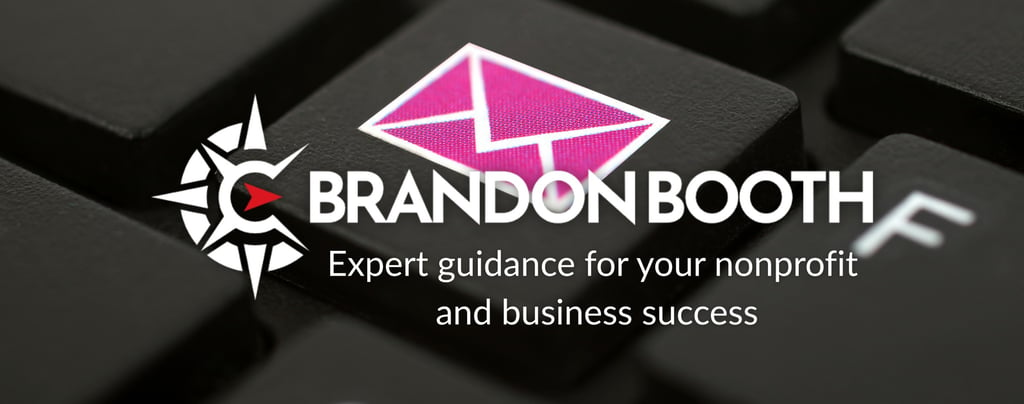Why Your Nonprofit Needs an Email List
Brandon Booth
5/5/20254 min read
Never miss a post! Signup for my email updates today and get expert guidance delivered directly to your inbox!


Nonprofit ministries have one overarching critical need: a committed, engaged audience that uses their services and supports their mission for the long haul.
Ask just about any run-of-the-mill marketer and the first thing they recommend is, you guessed it, social media. “It’s the digital marketplace.” “It’s where all the people are!” “You can reach millions!”
They’re not entirely wrong, you shouldn’t ignore it, but with the ascension of AI, short-form video, and the attention economy, social media is no longer a reliable place to build meaningful connections.
The Social Media Mirage
Facebook may have started out with good intentions. After all, their mission statement is “To give people the power to build community and bring the world closer together." But they also have another mission: profit. And for all the major social media platforms profit comes through attention. Eyeballs mean dollars. So, they really don’t want users to leave their platform. It’s simple: they need users scrolling their sites, not yours.
So the algorithms now heavily favor short, titillating, but quickly forgettable content that keeps your thumb swiping. Even if someone follows your page (and that’s a BIG if), there's no guarantee they'll see your posts. Research shows that organic reach on Facebook for nonprofit pages has plummeted to around 5%, meaning 95% of your subscribers never see what you share, let alone anyone else. And there’s another problem:
Trust is Your Ministry's Most Valuable Asset
For nonprofit ministries, trust isn't just important—it's essential. Trust is the foundation upon which engagement, donations, and volunteer support are built. People give their time, money, and attention to organizations they believe in and trust.
But trust can’t be built through fleeting interactions. It requires consistent, meaningful relationships over time. On social media your posts disappear within seconds, never to be seen (or remembered) again.
So what’s the solution?!
💌 Hello, Email!
It might be "old-school,” but email remains remarkably effective for nonprofit communication and fundraising. Email open rates for nonprofits average around 40% (source), far outperforming social media engagement rates that typically hover in the single digits. And those numbers go up for emails that deliver high value to their readers.
But beyond mere engagement numbers, email has the much greater, unquantifiable benefit of building that oh-so-important trust! Here’s how:
Direct Access to Your Audience
Unlike social media, email delivers your message directly to your supporters without algorithm interference. When someone subscribes to your email list, they're explicitly saying, "I want to hear from you." That permission-based relationship is invaluable.
Relationship Building Over Time
Email allows you to tell deeper stories, share more comprehensive updates, and develop relationships with your community through consistent communication. Unlike social posts that vanish quickly, emails remain in inboxes until they're read or deleted, giving your message a much longer lifespan.
You Own Your List
Perhaps most importantly, your email list belongs to you. Social media platforms can change policies, limit your reach, or even disappear entirely (anyone remember MySpace?), potentially taking your audience with them. Your email list remains yours regardless of what happens to any particular platform. AND better yet, you know your audience! You have individual names with direct lines of communication.
The "Thud Factor": Don't Overlook Physical Mail
While we're celebrating the power of email, let's not forget its physical counterpart. Direct mail continues to be remarkably effective for nonprofits, offering what marketers call the "thud factor"—the tangible presence of something landing on a supporter's desk or kitchen table.
Physical mail boasts impressive response rates of 4.4% compared to email's 0.6% (source). A well-designed newsletter, thank-you letter, or appeal creates a physical reminder of your ministry that can remain visible in someone's home for days or weeks.
Conclusion: Building Relationships That Last
In a world dominated by fleeting social media interactions, email stands as a reliable, effective way to build lasting relationships with your supporters. By creating a subscriber email list, your nonprofit ministry can cultivate deeper connections, communicate more effectively, and build the trust that sustains your mission.
The most successful ministries don't chase every new digital trend. Instead, they invest in communication channels that create genuine relationships—and email remains at the top of that list.
Ready to start building your email strategy? I can help you select the right platform, create compelling content, and develop a sustainable approach that grows your ministry's impact. Schedule a free consultation today and let's get started.
Looking for more digital ministry resources? Check out my article on 5 Mission-Critical Digital Tools for Your Nonprofit Ministry for additional guidance.


Email remains remarkably effective for nonprofit communication and fundraising.
© Brandon Booth, 2025
Expert guidance for nonprofits and ministries.
Brandon Booth



